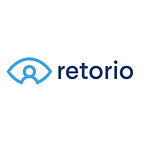From the moment a candidate spots a vacancy, the candidate experience commences. Even if an applicant is rejected after the first round, that individual will remember how they were treated. Making applicants feel comfortable around pre-employment assessments should be prioritized on the hiring journey. Given that $4,000 is the average amount that US companies spend to fill an open position, the pre-employment test needs to be effective.
According to some estimates, a bad sales hire costs between 50–75% of that hire’s annual salary. If a salesperson earns $50,000 per year, the fit costs between $25,000 and $37,500 to replace. A simple pre-employment assessment can weed out poor fit easily pays dividends.
What are best practices in a pre-employment assessment?
There’s plenty of best practices in a range of other HR functions: in-person interviews, on-site visits, and planning for employee training. When it comes to finding the optimal approach to a pre-screening option, it remains a bit unclear. What’s the right approach that is effective and efficient for both candidate and company?
Because it’s badly kept secret: applicants are a little skeptical about pre-employment assessments. The epitome of the wide-spread skepticism is below:
Yes, individuals are suspicious about the efficacy of these tools. And yes, hiring managers and their teams can create a system that by understanding this doubt, makes a stand-out candidate experience. The existing processes employers use to identify and select the best candidate include:
- Posting vacancies on online job boards or the company’s website
- Using a pre-screening method to find applicants who surpass the basic requirements
- Conduct a more in-depth assessment of short-listed candidates
- Coordinate interviews and conduct technical interviews and/or case studies
- Ensure a candidate’s records are correct
This is roughly the journey of hiring a candidate — from the company’s side. The pre-screening approach is just one step in the funnel of getting down to the good stuff: in-person or video interviews, right? But that shouldn’t be a throwaway piece; a pre-employment screening can and should be an additional way to delight a candidate. Remember a candidate is just a customer wanting to work at your company. Richard Branson’s Virgin Media found they lost $5 million in revenue per year due to a poor candidate experience. They found that 6% of their applicants ended up cancelling Virgin services or stopped using Virgin products after their lackluster encounter with the company. A bad pre-employment assessment experience could mean breaking down trust with a customer.
Organizations sometimes make applicants go through the obstacle course of setting up accounts, manually filling out application information, or requesting a cover letter. After that, a job seeker is looking for some sort of result, some sort of feedback that makes them feel they’ve ascended to the next level — even if it means rejection. The most irritating response a company can send out to potential employees: “You look really interesting. Please fill out this pre-employment assessment”.
A recruiter might as well say, “You may be a fit, maybe not. Please send in your request with the Robot Overlord first”. Not a good impression. In short, companies risk candidates feel frustrated in prolonging the initial phase of the hiring journey. Some may drop out; others may feel disgusted that they’re being reduced to a set of questions.
What to keep in mind for a stellar pre-employment interaction?
The candidate.
That’s the big secret — keep the pre-employment test person-centric.
Disclose first
Share with applicants at the beginning, even in the job description about how the hiring journey works at your company. Include that if selected to the next phase, you’ll receive a request about pre-screening test — an opportunity where they get to know the applicant beyond a resume.
Explain why
Tell potential team members why your company uses pre-employment assessment tools. “We want our interviewers to get to know our selected applicants on a more personal level”. This highlights them that you prioritize them as an individual and that you don’t succumb to the whims of a robot boss.
Receive a result, give back a result
After you’ve disclosed that a test will in fact occur in the preliminary stages of the process and have explained why its a priority for your organization, it’s time to give back. A test shouldn’t be a one-way street. Ideally it should be a mutually beneficial exchange. Companies receive information about a candidate; wouldn’t it make sense for a candidate receive feedback about their strengths and weaknesses as well?
It could be framed as career development or a sneak peak about how seriously a company takes their employees’ professional ambitions. Send over candidates results of the test, highlighting areas of their skill set or personality that impressed them. Add in areas that they should review and possibly work on for this position or for their career path in general. Giving candidates these kinds of thoughtful experiences can only pay dividends in building trust and a broader candidate pool.
Remember, candidates tend to have friends — — who they’ll either rave or complain about their interview experience with. Be sure to make a great “first” impression.
For more posts and product information check our Website.
